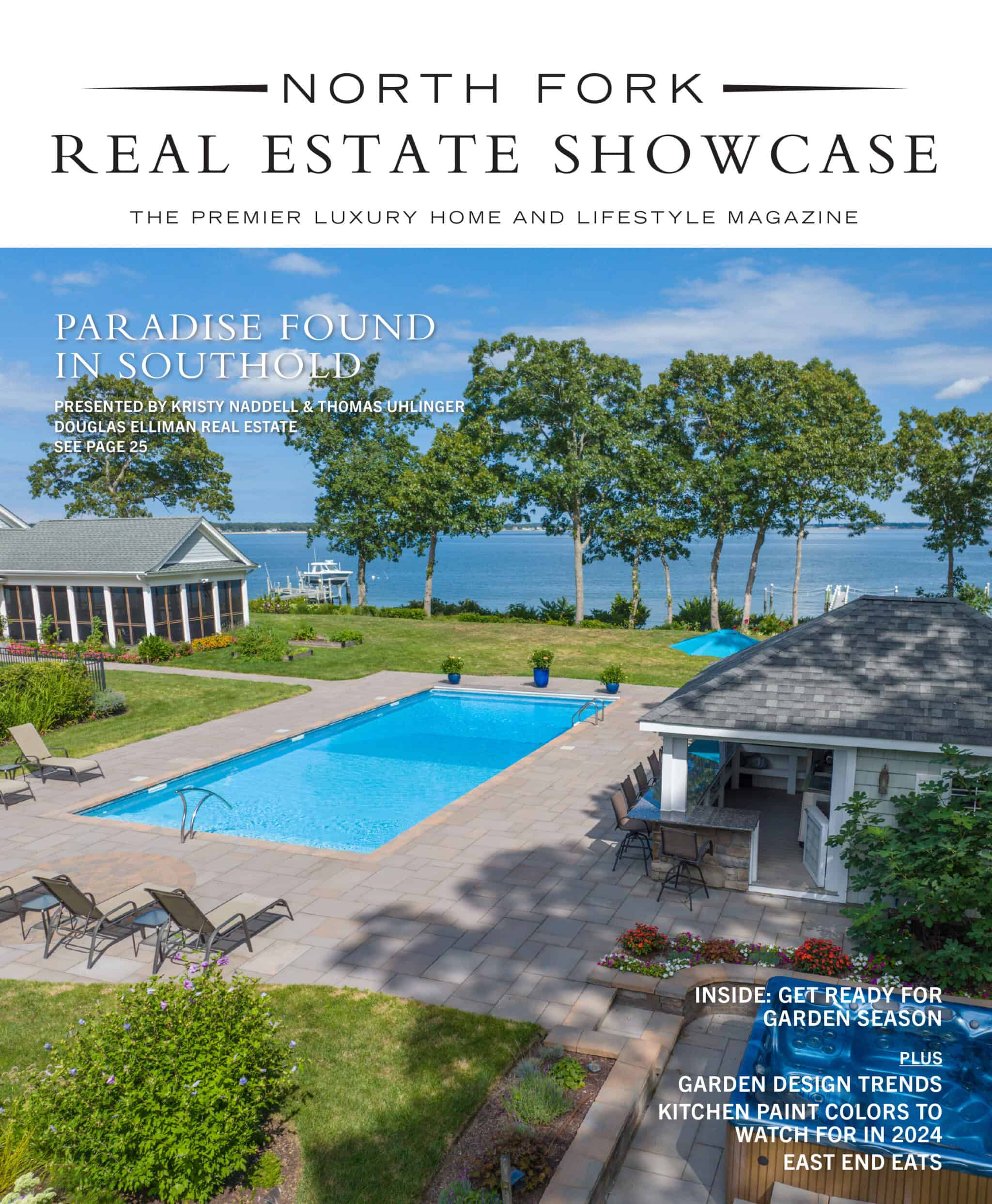The bright colors of summer flowers are behind us now, and autumn’s blaze of foliage—which was spectacular this year—is over until next year. But as the East End heads into winter there is still beauty to be found in home landscapes. In the quiet of winter the landscape sheds its summer finery to reveal its underlying forms–its bones. The landscape becomes living sculpture. We can see the structural lines of trees and shrubs which the rest of the year are hidden beneath leaves and flowers. With some planning your property can be beautiful 12 months of the year.

Here are some strategies for adding visual punch to your winter landscape:
Consider the shapes of trees and shrubs. A thoughtful grouping of trees and shrubs in an island bed can create a focal point all year. Trees come in many shapes and sizes. They may be rounded or oval, pyramid-shaped, open and wide-spreading, upright and narrow with a strong vertical line. Think about, for example, positioning a tall pyramidal Leyland cypress near a lower, gracefully spreading Japanese maple. The contrasting shapes will be beautiful even in winter.
For added interest in a bed, especially near a contemporary house, include a weeping tree, perhaps a dramatic blue Atlas cedar. For a touch of whimsy consider a corkscrew willow or contorted hazel, whose fanciful branches twist and twirl into space.
The next time you add a tree to your landscape, whether for shade, privacy or beautiful flowers or foliage, think about its shape, too, when choosing what to plant.
Plant trees and shrubs with decorative bark. Winter is the time to appreciate the many textures of bark on trees and shrubs; some are truly lovely. The Heritage river birch has white bark that peels to expose cinnamon or grayish inner bark. Paperbark maple’s brown bark peels to expose a layer of orange-brown inner bark underneath. Crape myrtle has smooth, gray bark that exfoliates to reveal inner bark that’s gray and brown. The bark of lacebark pine peels away in plates to expose light inner bark in a patchwork pattern. The climbing hydrangea vine that’s so magnificent in summer in winter displays its shaggy, russet-brown bark.
Use evergreens for winter color. Evergreen trees and shrubs are colorful all year. And they come in many shades of green that can combine in beds or borders. There are bright crayon-box greens, soft blue-greens, deep forest greens, cheery yellow-greens, silvery gray-greens. There are even golden evergreens whose brilliant color positively glows against a gray winter sky or snow-covered lawn for an arresting focal point in the landscape.
Look for berries. Hollies are treasured for their bright berries as well as their lustrous leaves. Red is the classic color, but there are also hollies with orange or yellow berries. Most hollies are evergreen, but a deciduous one—winterberry—packs its stems with bright red berries in fall. After the leaves drop, the berries can remain well into winter…if local birds and wildlife don’t get them first.
This winter, make it a point to look at your landscape and discover its quiet beauty. Then start planning how to make it even better next year.
Anne Halpin is a writer, editor, professional gardener and author of 17 bookson gardening and related subjects. She lives on the South Fork.









